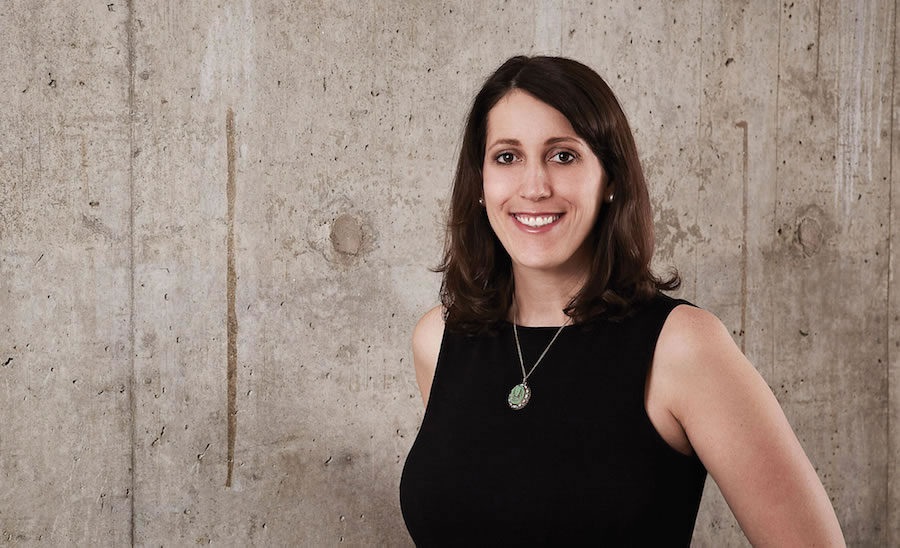When it came time for Sarah Dirsa to study for the MCATs, the future architect says she wanted to jam a pen in her eye. Realizing her intended path wasn’t necessarily feeling like the best fit, she moved abroad to bartend and figure out her next move when a design show unexpectedly captured her interest and planted what would go on to be a life-changing seed. “It focused on the ecology of design and how different layouts of spaces affect people differently, and I thought, ‘That’s something I’ve always been interested in but never really considered,’” she says. She spoke to a friend of the family in the field who suggested returning to school for architecture, which is how Dirsa, who would go on to win a 2015 AIA Young Architects Award, found herself at Washington University in St. Louis, Missouri.
“I came to St. Louis because it seemed like such a Petri dish for intervention,” she says. “And being in architecture school, you can do a lot of good in the city while learning.” Upon graduation, she ended up at HOK where a coworker’s presentation on an organization she developed called SEED (Social Economic Environmental Design) inspired Dirsa to take the attitude and specific drive that landed her at Wash U and apply it to her professional life. “What really stuck out in that presentation was the idea of how buildings can positively affect and change human health and well being and can truly have an impact on your life,” she says, explaining how that afternoon inspired her to co-found HOK IMPACT—HOK’s corporate social responsibility initiative—in 2010. Through the initiative, HOK employees ask the question, “What happens when an international design firm mobilizes to make the world a better place through service and philanthropy?” It’s rooted in what Dirsa calls the triple bucket approach: projects (“How can you serve the community with respect to the role you were hired to fill?”), volunteerism (“How can you give your time outside of work?”), and donations (“How can the company give things other than time, whether it be money, canned food, or school supplies?”), with the perfect project being one that incorporates all three.
Dirsa says the most impactful project she’s worked on with regards to Impact is the William Jefferson Clinton Orphanage and Children’s Center in Port Au Prince, Haiti, on which she served as a core member of the design team and worked to develop the overall form of the building. The project—a collaboration between HOK and the USGBC—“seeks to bring super-sustainable design to people in the developing world” and rebuild an orphanage damaged by the January 2010 earthquake. “Unfortunately the construction process is taking longer than we anticipated, so the volunteer aspect of actually working on the project hasn’t happened, but a lot of the people on the project have donated time to speak about the work at various conferences,” she says. “I think it’s the closest we’ve come to bringing together all three buckets at one time.” Dirsa’s work on additional projects such as a health clinic in Little Havana in Miami, as well as her position as the project designer on an apartment building in Minneapolis, were also included in her application for the AIA Young Architects Award, ultimately leading to her recognition by the organization this year.

Also included in that roundup of the young designer’s inspiring work was her founding of SEED St. Louis—an education and advocacy platform for initiatives in the gateway to the west that supported the triple bottom line (social, economic, environmental)—which manifested simultaneously with HOK Impact. “It wasn’t that we were creating new projects or doing anything new; it was about the engagement and awareness in bringing forth projects that were already embodying these ideals and making them more known in the community and creating a shared collaborative space for people doing this kind of work,” she says, noting that although the community responded quite positively to the initiative, her very full plate led SEED St. Louis to take a backseat for the time being.
Still, Dirsa’s work speaks for itself and it’s no surprise she’s been recognized by AIA for her commitment to service and community-driven work. Despite all of her personal achievements thus far and her role as HOK’s first-ever global chair of social responsibility, Dirsa will be the first to humbly downplay her successes. “We didn’t come up with anything new with Impact; these were all things that HOK was already doing,” she says. “Obviously I didn’t do all the work. Impact has been a group effort and a collaboration between a lot of people in the office. But, it is really nice to be recognized for this type of work and have the idea of social responsibility be recognized and promoted at the AIA awards. I was very excited and proud to learn that I won.”

